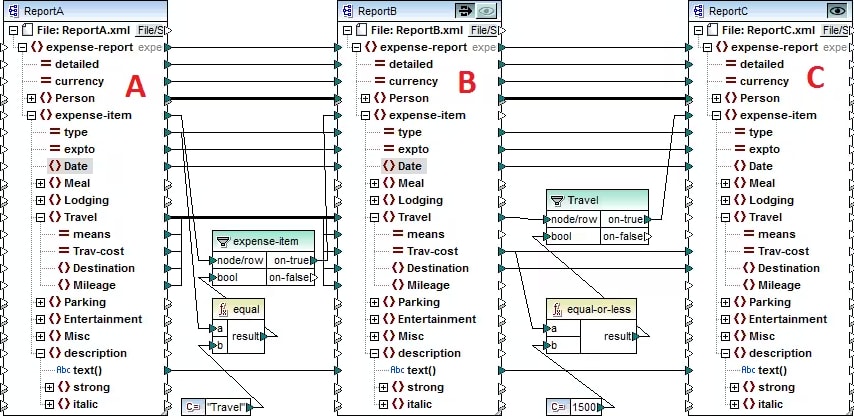How to Create a Chained Data Transformation
Data mapping plays a vital role in modern data-driven organizations, enabling efficient data management and integration. Altova MapForce is a powerful, graphical data mapping tool that supports endless data transformation scenarios, including one-to-one, one-to-many, many-to-one, and chained data conversion.
While there are applications for each of these approaches, chained data mapping is especially helpful for complex data processing tasks where multiple stages of data manipulation are required. Here’s a look at the benefits of a chained data conversion approach – and a video of how MapForce makes the process easy and straightforward.

Why Define a Chained Data Mapping?
There are multiple advantages to the chained data transformation approach, especially when handing complicated data transformation projects. (For the tl;dr, check out this how-to video to see how easy it is to define chained data mapping projects visually using Altova MapForce.)
Benefits of creating a step-by-step data conversion process include:
- Simplifying complex data processing: A chained data mapping approach makes it easier to handle complex data processing tasks by breaking the transformation down into smaller, manageable stages. Each link in the chain performs a specific operation on the data, making it easier to understand, test, and maintain.
- Easy troubleshooting: By design, each transformation in the chain is responsible for a specific aspect of data manipulation. This makes the mapping easier to understand and makes it easier to identify and isolate errors or issues that may occur during the processing.
- Flexibility and adaptability: Chained data conversion offers flexibility for handling different data scenarios. Developers can easily modify or extend the chain by adding, removing, or rearranging transformations to accommodate new requirements or variations in input data. This adaptability is important if data processing needs evolve over time.
- Easy understanding and maintenance: Sequential data transformation helps make a mapping project easier to understand and maintain. Each step in the chain represents a clear transformation operation, making it easier for team members to understand the overall data flow and logic. Additionally, if a bug or issue arises, developers can pinpoint the problematic step and debug it in isolation without affecting the rest of the chain.
Chained Data Transformation using MapForce
MapForce offers a no-code, graphical approach to defining each step on the data conversion process. The visual representation provides a clear overview of the transformation at each step, making it easy to understand and modify.
MapForce ships with a rich library of data processing filters and functions for defining data transformation rules and building more complex, visually defined functions. Instant output facilitates testing and troubleshooting.

In a chained data mapping, at least one component acts both as a source and a target. This intermediate component (labeled B above) creates output that is then used as input for further processing in the next step in the chain. Chained mappings in MapForce include the “pass-through” feature, which allows you to preview the output produced at each stage of the mapping for quick troubleshooting. For example, in the mapping above, you can preview (and save) the output resulting from transformation A to B, as well as the output resulting from B to C.
Though this example shows XML-to-XML transformations, MapForce is an any-to-any data mapping tool with support for converting between any combination XML, SQL and NoSQL databases, JSON, text, Excel, EDI, and more.
Watch this video to see how chained data transformation works in MapForce. The example shows a transformation from XML to JSON to CSV and covers the use of data filtering and sorting functions.
You can explore chained data mapping yourself by downloading a free, 30-day trial of MapForce and opening the Chained Mapping that is included in the MapForce examples project.
